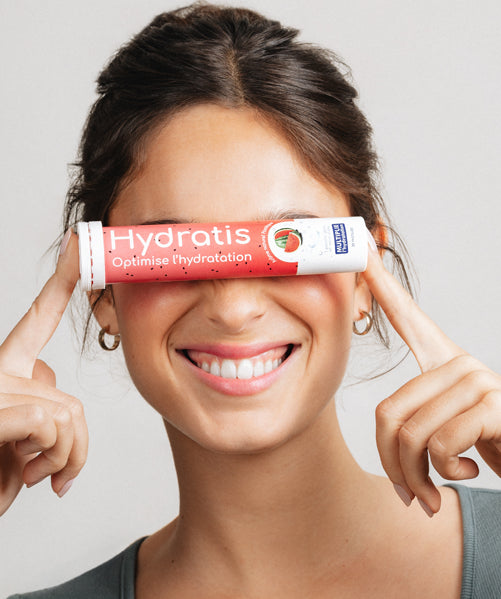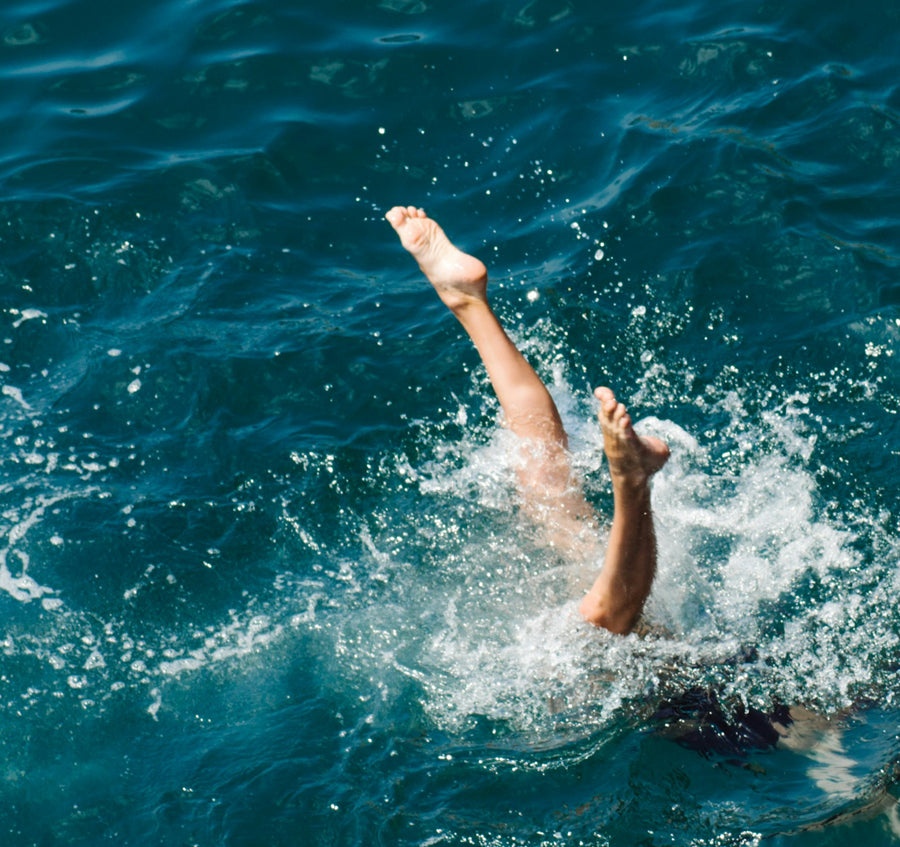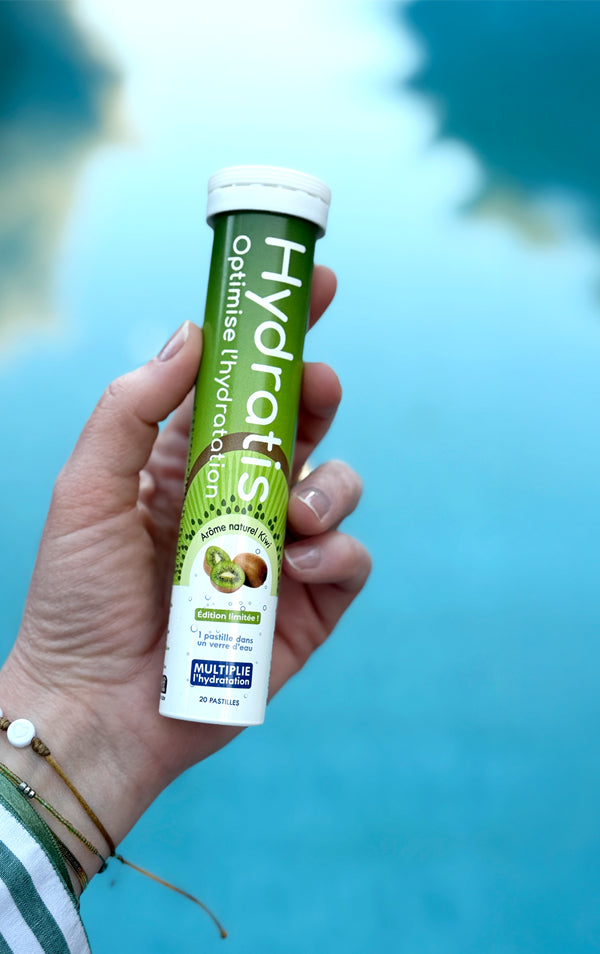Electrolyte drinks have been all the rage for a while now, especially in the world of sports. Most of the time, they're store-bought, but today, we're going to look at how to make a homemade electrolyte drink.
While it's easier and more effectiveto buy ready-made electrolyte drinks , making them at home is a more personalized and cost-effective solution. You can choose only the ingredients you want and create a healthy solution yourself.
Electrolytes: Why are they essential?
Electrolytes , such as sodium , potassium , calcium and magnesium , are important minerals for the body. They play a key role in hydration, helping to maintain the body's fluid balance and will regulate the transport of water and nutrients across cell membranes, thus contributing to the proper functioning of cells. In addition, they will also participate in recovery after exercise and the maintenance of muscle balance.
It is important to know that electrolyte deficiency can manifest itself through various signs and symptoms caused by a lack of sodium, magnesium, calcium or potassium. These signs includefatigue , muscle cramps or even an increased feeling of thirst, which can indicate an electrolyte imbalance .

Electrolyte drinks are particularly suitable for athletes who engage in intense and prolonged physical exercise. These drinks are also useful in cases of illness leading to dehydration and electrolyte loss , or for people living in hot climates, where hydration is essential.
The Essential Ingredients for a Homemade Electrolyte Drink
The essential basics
To make your electrolyte drink, a base is necessary. This obviously concerns water , which is the heart of hydration, salt , which will provide the necessary sodium and finally baking soda which provides minerals and will contribute to the acid-base balance of the body.
Natural sources of electrolytes
To enrich your drink with electrolytes , you can add coconut water , lemon or banana , which will not only contain calcium, magnesium and potassium, but will also add flavor to your drink. Coconut water is naturally rich in potassium, while lemon and banana will provide calcium, magnesium and other essential minerals. However, these ingredients increase the amount of sugar in the drink.

Natural sugars
Depending on your usage, you may need energy, and in this case, several natural sugars are possible. For this, you can choose honey or maple syrup for a quick, easily assimilated, and natural energy boost. Alternatively, there is the choice of fruit juices to provide you with vitamins in addition to energy. Vitamins are essential for our bodies and strengthen our health. To maximize your nutrient intake, favor fresh fruits and their natural derivatives in your diet.
Simple and Effective Recipes for Homemade Electrolyte Drinks
Quick recipe
To make a quick and simple recipe , you will need:
- 500 mL of water,
- a large pinch of salt,
- 1 to 2 tablespoons of honey, depending on your energy needs,
- Half a squeezed lemon
Simply shake the bottle to mix everything together, and you'll have an effective electrolyte drink. Feel free to adjust the proportions slightly to suit your needs.
Hydrating Coconut Water
Coconut water on its own is also naturally rich in potassium and is an ideal solution after exercise or sports. Thanks to its pleasant taste and balanced electrolyte composition, it's a quick and convenient solution that will improve your hydration.
Banana peel drink
You can also make banana peel infusions . Banana peels contain potassium and magnesium, which are essential for hydration. Adding a pinch of salt for sodium and the juice of half a lemon makes a complete electrolyte drink.
Pickle juice drink

The last recipe we're going to present is a little more original, since it's a pickle juice drink. Yes, pickles, we assure you, it's good!
You will need:
- 100 mL of pickle juice,
- 400 mL of water,
- a pinch of salt
- and a tablespoon of lemon juice.
Pickle juice is rich in sodium and electrolytes and can be very effective for athletes after intense exercise.
Instructions for use and storage
Here are some tips for your homemade drinks:
You can keep your drink refrigerated for up to 1 day. There's no need to make too much of your drink.
Shake vigorously before drinking, so that all the ingredients mix well and the drink is smooth.
The Benefits of Homemade Electrolyte Drinks
Preparing your own electrolyte drink is a cheaper option that allows you to choose your own ingredients and therefore have a natural drink adapted to your hydration and energy needs and which is to your taste.
The benefits of Hydratis drinks

If you don't have time to prepare your own drinks, Hydratis electrolyte tablets are a great option! Simply add two tablets to a half-liter bottle of water and you'll maximize your electrolyte intake. The tablets are convenient, effective, and quick to use.
At Hydratis, we have reduced the ingredients in our lozenges as much as possible to focus only on the essentials: your hydration.
Frequently Asked Questions (FAQ)
How to make your own electrolyte drink?
With water, salt, lemon juice and to give a good taste, a natural sweetener.
Can I make my own electrolyte solution?
Yes, with simple products available in your kitchen.
How long does a homemade drink last?
Up to 24 hours in the refrigerator in an airtight container.
In this article, we've given you the keys to making your own electrolyte drinks at home. This allows you to maintain good hydration throughout the day. So now, there's no more excuse for not getting your electrolyte intake!
Sources
Maughan, R.J., & Shirreffs, S.M. (2010). Dehydration and rehydration in competitive sport. In Scandinavian Journal of Medicine & Science in Sports (Vol. 20, Issue s3, p. 40-47). Wiley. https://doi.org/10.1111/j.1600-0838.2010.01207.x
Begum, G., Konstantaki, M., Cunliffe, A., & Leveritt, M. (2015). Effectiveness of Commercial versus Homemade Sports Drinks on Fluid Balance and Exercise Capacity During High-intensity Intermittent Exercise. In American Journal of Sports Science and Medicine (Vol. 3, Issue 2, pp. 39-46). Science and Education Publishing Co., Ltd. https://doi.org/10.12691/ajssm-3-2-3






